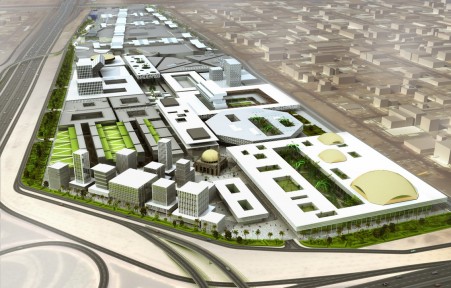KUWAIT AL-RAI MASTERPLAN, KUWAIT, KUWAIT CITY, 2006

The tensions between tradition and modernity are active in the countries of the Gulf area since the middle of the 20th century when they witnessed rapid development and change following the discovery of oil with economic quantities in the region. These tensions are evident and magnified in the Gulf countries more than in other parts of the world.
Kuwait is located on the northern corner of the Gulf and occupies an area of 17,818 square kilometers. Fifty years ago it was only a small fishing village, but it has emerged as one of the richest and most culturally significant cities in the area. Kuwait went through too-rapid modern transformation and development stage that took place with enormous speed.
In 1951 a study of Kuwait city identified an inventory of significant areas for “replanning”. The list included the development of city zones for public buildings, industry, commerce, schools, new housing, parks, sports grounds, and other open spaces. The study also resulted in the redevelopment of the road system, including improved main roads linking Kuwait with the adjoining towns and villages.
Beginning in the nineties, globalization had a strong impact on many cities of Third World countries. Central Business districts, air-conditioned office towers, and fast-food franchises developed at larger rates, influenced heavily by familiar Western models. To date, the city of Kuwait has seen the effects of globalization in the city, from the level of urban and suburban sprawl to the development of western influenced shopping centers.
The proposal for the site in Kuwait city is to combine a mall, market, theatre, health center, convention center, hotel, mosque, office buildings, residential space, and a small industrial area.




 cityup.org 传真电话:010-88585380
cityup.org 传真电话:010-88585380